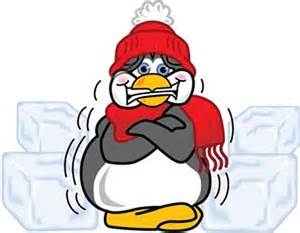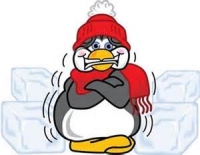
This policy provides direction to all parents, staff, students and volunteers about the appropriate response with Inclement Weather conditions. This policy helps create a safe environment for all children, staff, students and volunteers at Together We Grow Learning and Childcare Centre.
Weather conditions can change throughout the day. When weather conditions are questionable, principals can consult Environment Canada’s www.weatheroffice.gc.ca for information, as well as www.theweathernetwork.com for their local forecast.
Children need an opportunity to get exercise and free play time outdoors. However, weather conditions sometimes warrant indoor routines or a reduced activity level. Conditions requiring changes in normal practice are:
- Rain, freezing rain, thunderstorms, lightning, hail, ice, extreme winds - require indoor routines
- Extreme cold weather
- Extreme hot weather
Some important terms
- Extreme Weather—Refers to a variety of inclement weather occurrences, including; extreme high or low temperatures, lightning, hail, heavy rain, flooding, tornado/hurricane warnings, blizzards, ice storms, and any weather that could create unsafe road conditions.
- Cold Stress—Refers to the effect on the body when it is exposed to low temperatures. This could be due to a number of variables, including; air temperature, wind speed, and wind chill. If a person is experiencing cold stress a series of health complications can develop, including; frost nip, frost bite, or hypothermia.
- Heat Stress—Refers to an increase in the body’s core temperature. This could be due to a number of variables, including; air temperature, humidity, radiant heat and the Humidex. If a person is experiencing heat stress a series of health complications can develop, including heat rash, heat cramps, heat exhaustion, or heat stroke.
- Humidex—Refers to the perceived temperature base on a combined measurement of air temperature and humidity.
- Wind Chill Factor—Refers to the perceived temperature on exposed skin based on a combined measurement of air temperature and wind speed.
Extreme hot or cold weather conditions may have a negative impact on the health and safety of children and adults. Through implementation of this policy and related guidelines, Together We Grow Learning and Childcare Centre put into action steps which will minimize, to the greatest extent possible, risks associated with extreme weather including frostbite, sunburn and heat exposure will determine the extreme cold weather temperature. This temperature with wind chill, shall be included within a -15 degrees Celsius to -20 degrees Celsius.
Extreme Cold Weather
When temperature and/or wind chill are within a range of - 15c to - 20c.
Extreme Hot Weather
When the humidex is over 40 or where the UV index is 6 or higher.
Below we outline the strategies that will be implemented:
EXTREME COLD WEATHER
Temperature and/or wind chill minus 20 degrees Celsius: Indoor routine
Temperature with wind chill minus 15 to minus 20 degrees Celsius: Indoor routine, or Outdoor routine shortened to 30-45 minutes
STRATEGIES TO BE IMPLEMENTED
- Refer to Environment Canada’s Wind Chill Program – Wind Chill Hazards
- Remind parents to dress their children appropriately for the weather and ensure proper headwear, gloves/mittens, and footwear – winter boots etc.
- Children should be monitored closely for signs of frost nip, frostbite or difficulty breathing
EXTREME HOT WEATHER
Humidex: Indoor routine
Humidex over 34: Classes will have indoor gross motor play in the lower gym downstairs or within their classroom, depending on gross motor activity.
STRATEGIES TO BE IMPLEMENTED
- Refer to Environment Canada information on humidity, humidex and guide to summer comfort, UV index
- Personal water bottles will be allowed for children indoors and outdoors.
- Through regular communication practices (i.e., newsletters, morning announcements), remind parents and students to wear light weight and light coloured clothing and other hot weather necessities – hats, sun visors, sunscreen etc.
UV INDEX
UV Index of 6 (High) or over: Regular routine with Precautionary Measures Communicated (Proper Sun Protection)
STRATEGIES TO BE IMPLEMENTED
- Refer to Environment Canada information on humidity, humidex and guide to summer comfort, UV index
- Raise awareness through regular communication practices (i.e., newsletters, morning announcements) and remind parents and students about UV rays and proper sun protection – hats, sun visors, sunscreen, seek shade, etc.
RESOURCE MATERIALS
Environment Canada Wind Chill
Source: Environment Canada’s Wind Chill Program (access information through Environment Canada website’s “frequently asked questions” and choosing question on wind chill.) (www.msc.ec.gc.ca/education/windchill/index_e.cfm)
Wind Chill Hazards and Risk of Frostbite
| Wind Chill | Risk of frostbite | Health Concern | What to do |
| 0 to -9 | Low | - Slight increase in discomfort | - Dress warmly, with the outside temperature in mind. |
| -10 to -27 | Low | - Uncomfortable - Risk of hypothermia if outside for long periods without adequate protection | - Dress in layers of warm clothing, with an outer layer that is wind-resistant. - Wear a hat, mittens and scarf. - Keep active. |
| -28 to -39 | Increasing risk: exposed skin can freeze in 10 to 30 minutes | - Check face and extremities (fingers, toes, ears and nose) for numbness or whiteness - Risk of hypothermia if outside for long periods without adequate protection | - Dress in layers of warm clothing, with an outer layer that is wind-resistant. - Cover exposed skin: wear a hat, mittens and a scarf, neck tube or face mask. - Keep active. |
| -40 to -47 | High risk: exposed skin can freeze in 5 to 10 minutes* | - Check face and extremities (fingers, toes, ears and nose) for numbness or whiteness (frostbite) - Risk of hypothermia if outside for long periods without adequate protection | - Dress in layers of warm clothing, with an outer layer that is wind-resistant. - Cover all exposed skin: wear a hat, mittens and a scarf, neck tube or face mask. - Keep active. |
| WARNING LEVEL** -48 to -54 | High risk: exposed skin can freeze in 2 to 5 minutes* | - Check face and extremities frequently for numbness or whiteness (frostbite) - Serious risk of hypothermia if outside for long periods | - Be careful. Dress very warmly in layers of clothing, with an outer layer that is wind-resistant. - Cover all exposed skin: wear a hat, mittens and a scarf, neck tube or face mask. - Be ready to cut short or cancel outdoor activities. - Keep active. |
| -55 and colder | High risk: exposed skin can freeze in less than 2 minutes | DANGER! - Outdoor conditions are hazardous | - Stay indoors. |
*In sustained winds over 50 km/h, frostbite can occur faster than indicated.
Humidity
It's a well-known fact that the body retains more heat when the weather is hot and humid than it does during a drier but equally warm day. Why? As a response to excessive heat in the surrounding environment, our bodies perspire to make us feel cooler. Evaporation works best when the air is dry. In moist, saturated air, perspiration cannot evaporate as readily. The combination of excess heat and moisture will cause us to feel hot and sticky. As a rule of thumb, the higher the humidity, the greater the discomfort.
Relative humidity
Relative humidity is the amount of moisture that the air contains compared to how much it could hold at a given temperature. A figure of 100 per cent would mean that the air has become saturated. At this point, mist, fog, dew and precipitation are likely. Relative humidity is normally at its maximum when the temperature is at its lowest point of the day, usually at dawn. Even though the absolute humidity may remain the same throughout the day, the changing temperature causes the ratio to fluctuate.
Guide to summer comfort
Range of humidex - Degree of comfort
- Less than 29 Celsius: No discomfort
- 30 to 39 Celsius: Some discomfort
- 40 to 45 Celsius: Great discomfort; avoid exertion
- Above 45 Celsius: Dangerous
- Above 54 Celsius: Heat stroke imminent
An extremely high humidex reading can be defined as one that is over 40 Celsius. In such conditions, all unnecessary activity should be curtailed. If the reading is in the mid to high 30s, then certain types of outdoor exercise should be toned down or modified, depending on the age and health of the individual, physical shape, the type of clothes worn, and other weather conditions
This document is published by authority of the Minister of the Environment. Copyright Minister of Supply and Services Canada 1995. Catalogue Number En57-24/23-1995E. ISSN 0715-0040. ISBN 0-662-22990-8
UV Index
INTERPRETATION OF THE UV INDEX:
The UV index is included in Environment Canada's weather forecasts whenever it is expected to reach 3 (moderate category) or more. This table outlines the sun protection actions recommended at different levels of the UV index. Remember that the amount of UV you receive depends on both the strength of the sun's rays (UV Index)and the amount of time you spend in the sun. What does UV Index mean?
| UV Index | Category | Sun Protection Actions (in detail) |
| 0 - 2 | Low | Minimal protection for normal activity |
| 3 - 5 | Moderate | Cover up. Wear hat, sunglasses, sunscreen if outside for 30 min. |
| 6 - 7 | High | Protection required. Reduce time in sun between 11AM and 4PM |
| 8 - 10 | Very High | Take full precautions and avoid sun between 11AM and 4PM |
| 11+ | Extreme | Take full precautions and avoid sun between 11AM and 4PM |
